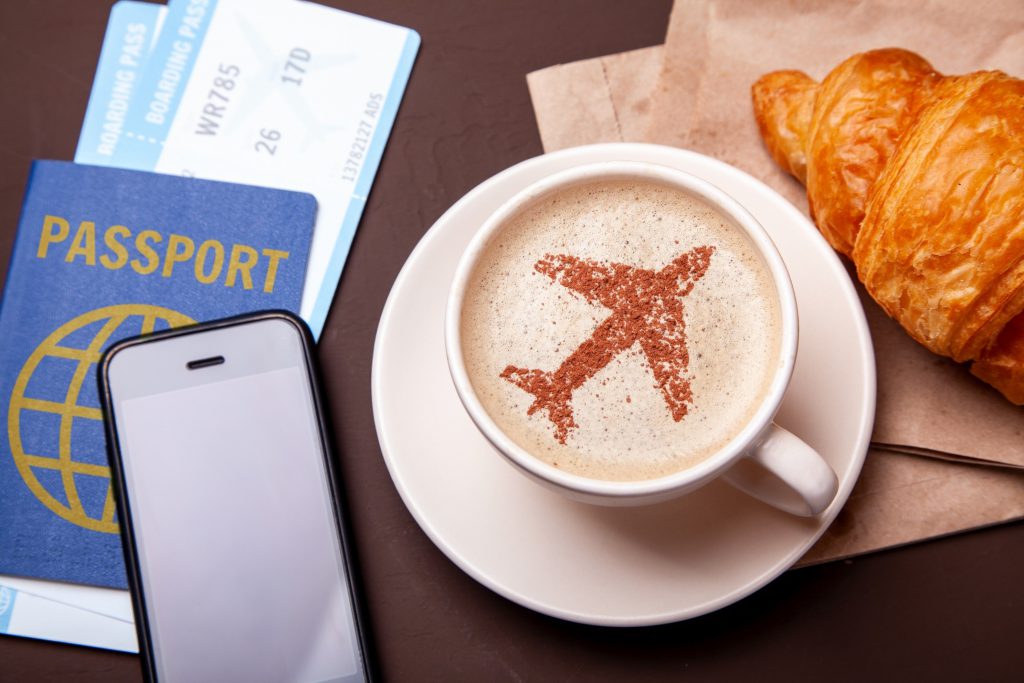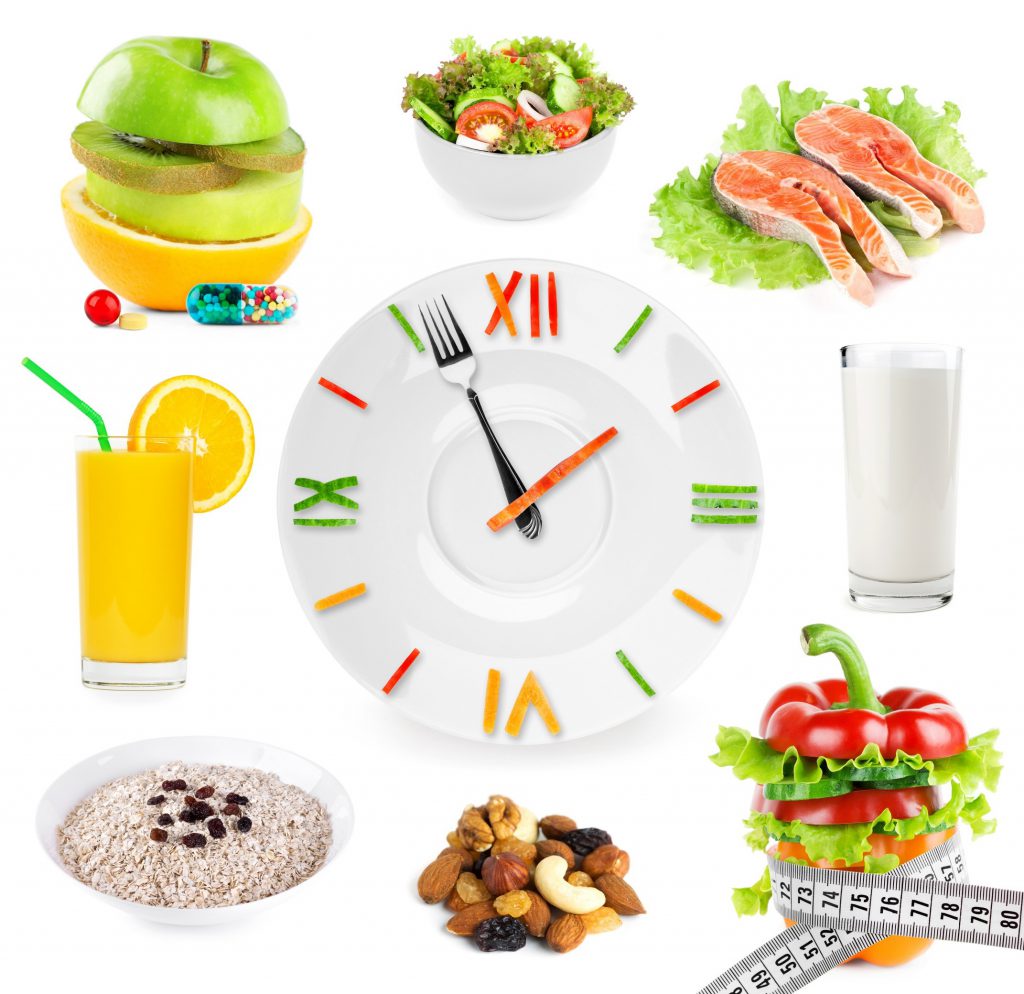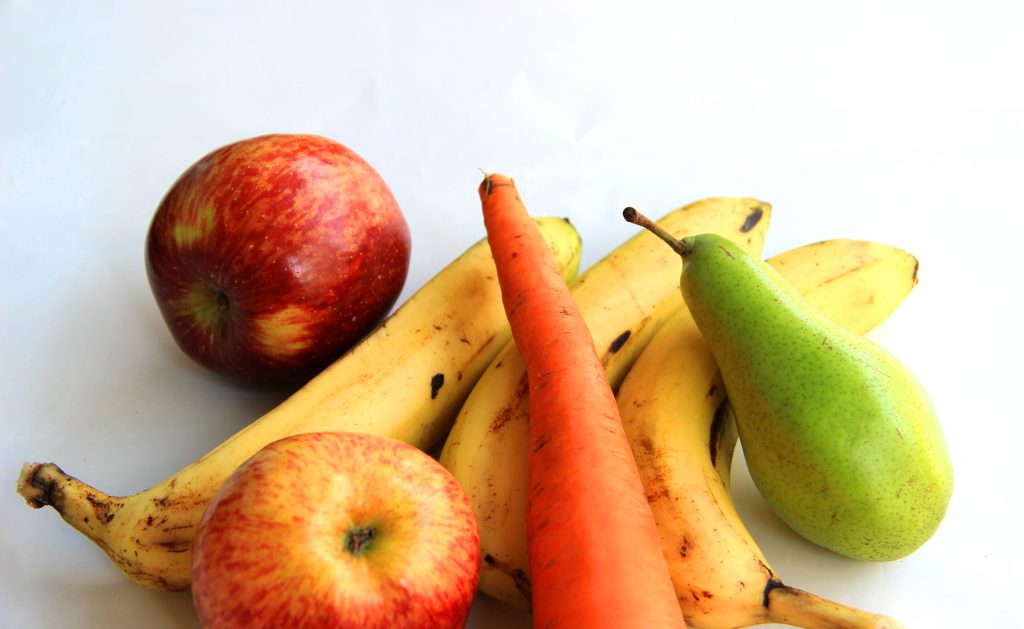It’s hard to focus on eating healthy when we’re traveling, whether it’s flying across the country on a business trip or driving 7 hours to see family for a holiday visit. The mood is hectic and to-do lists are long, so eating healthy often becomes an afterthought. Even worse, food often feels out of our control when traveling; you can end up feeling like the victim of whatever choices are available in an airport or get hungry on a 200 mile stretch of road where less healthy choices may seem like the only option.
It’s not a big deal if it happens here or there, but if you’re someone who travels a lot, this can add up in the long run. Here are some helpful tips to avoid having your health be disrupted by travel.

1. Time your meals and snacks to be consistent with your normal routine
One important strategy is to try to keep your food intake as close to normal as possible. Our bodies like consistency, so when we shake up our schedule it can take some time for our hunger signals to adjust. This means planning to eat meals at times you’d normally eat. If you’re in a hotel, set your alarm to wake up at a time close to when you’d usually wake up and have breakfast. Plan to have snacks at the times you’d usually eat snacks. If you’ll be on the road when you’d usually be having something to eat, try to plan ahead for what food choice you’ll make so you’re ready when your normal mealtime comes around.

This gets a lot harder when crossing multiple time zones. If time changes mean you’ll end up sleeping during a time you’d normally have a meal, try to have a snack before you go to sleep so you don’t wake up as hungry. High protein snacks (yogurt, nuts, cheese, etc) are great choices since protein can help us feel full longer.
The more hunger we feel, the harder it is to make a healthy choice. Staying consistent with our usual eating patterns can not only help us make the right food choices, but also gives a sense of normalcy while traveling and is a great way to improve mental and physical well-being on the go.
2. Be prepared
Packing meals and snacks helps tremendously with tip #1. You never know when you’re going to be stuck on a plane or not have access to food during a time you’d normally be eating, and for me that added desperation makes the hunger feel so much worse.
If you have kids, you probably know how chaotic it can be when their snacktime rolls around and you find you forgot to pack anything for them to eat. A hungry kid can often be more easily upset, especially when young, can bring all kinds of unpredictability to your day.
Deep down, we are still like that as adults, we have just learned to repress our screaming and tantrums – instead we just silently suffer with hunger. The phrase ‘hangry’ comes to mind. Treat your hunger just like you would treat your kid’s!

3. Choose the right foods
Most dietary recommendations suggest people should get more fruits, vegetables, and whole grains, so these are great to focus on when deciding what snacks to pack or meals to prepare ahead of time. Convenience is often the #1 priority when traveling, so be realistic with your food choices. It’s not safe to eat a salad while you’re driving, and the nose of your neighbor on the plane probably won’t be thrilled if you somehow managed to pack yourself some grilled fish.
Dried fruit and nuts can make a great snack, as long as you are aware of the proper portion sizes. It’s easy to end up eating 500 calories after a few handfuls before you realize it! Convenient fruits and vegetables like bananas, apples, or carrots can be good choices for cars or planes. Fruit and vegetable 100% juice blends can offer fruit and vegetable servings in a convenient package, although this can also be easy to consume too much of – aim for 4-6 oz rather than an entire bottle. High protein, whole grain snack bars can also be a good option.

More and more products are offering fruits, vegetables, nuts, and whole grains in convenient formats like dried, poppable bites, scoops, bars, and beverages, so keep your eye out for these if you’re looking to try new things.
At breakfast time, one trick is to add more protein, since many people don’t get enough protein early in the day. Most breakfast foods are high in carbohydrates and low in protein, like cereal, bagels, pastries, muffins, and things like that. Adding more protein to breakfast helps people feel full longer, and it also helps our bodies hold on to our muscle mass when we’re losing weight. If you’re facing down a hotel breakfast buffet, try to choose some protein-boosting strategies like adding peanut butter, protein powder, eggs, or dairy foods like milk or yogurt to your breakfast.
One of the biggest challenges when traveling can be eating out at restaurants, where large portion sizes loom. These aren’t bad every once in a while, but if you’re traveling for a few days the feeling of being stuffed can wear you down.
Some tips for dining out might include:
- Ask the server to put half of your dish in a to-go container, so you’re only eating a half portion. If where you’re staying doesn’t have a refrigerator, share a meal with someone.
- Choose smaller dishes, like salad paired with an appetizer, or choose a few plates to share among the table.
- Use menu nutrition information, if it’s available, to help guide your choices.
The hardest time to eat healthy is when we’re unprepared. We lose a lot of the control we normally have over our lives when traveling, so use these tips to try to gain some of it back.

 Nathan Pratt, PhD, RD is a nutrition scientist passionate about finding ways to make science easily used and understood to improve health. During his time working with the food and beverage industry he has worked with companies globally to bridge the gap between consumer insights and nutrition science and to better leverage nutrition in their strategies and product development.
Nathan Pratt, PhD, RD is a nutrition scientist passionate about finding ways to make science easily used and understood to improve health. During his time working with the food and beverage industry he has worked with companies globally to bridge the gap between consumer insights and nutrition science and to better leverage nutrition in their strategies and product development. 

